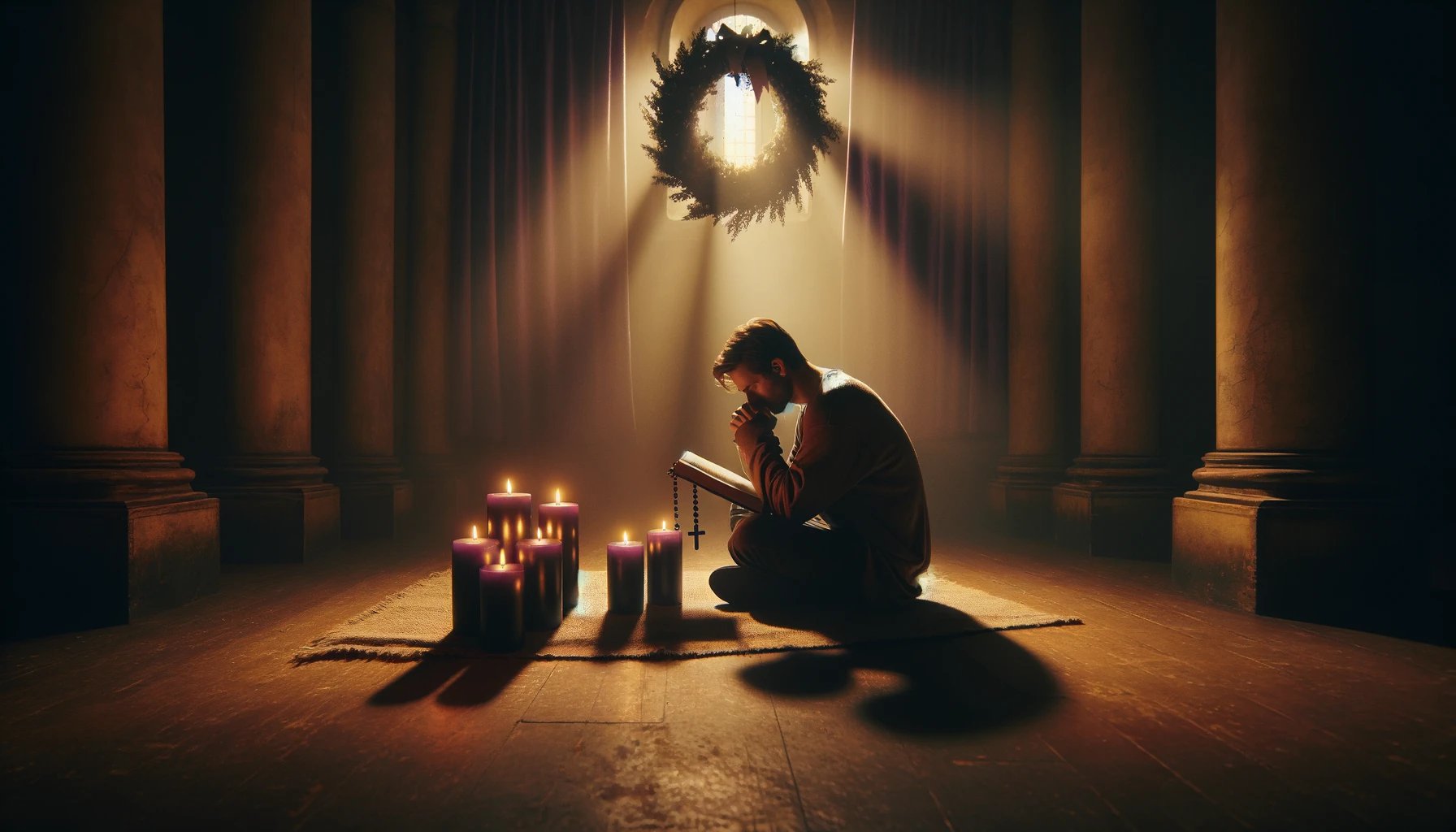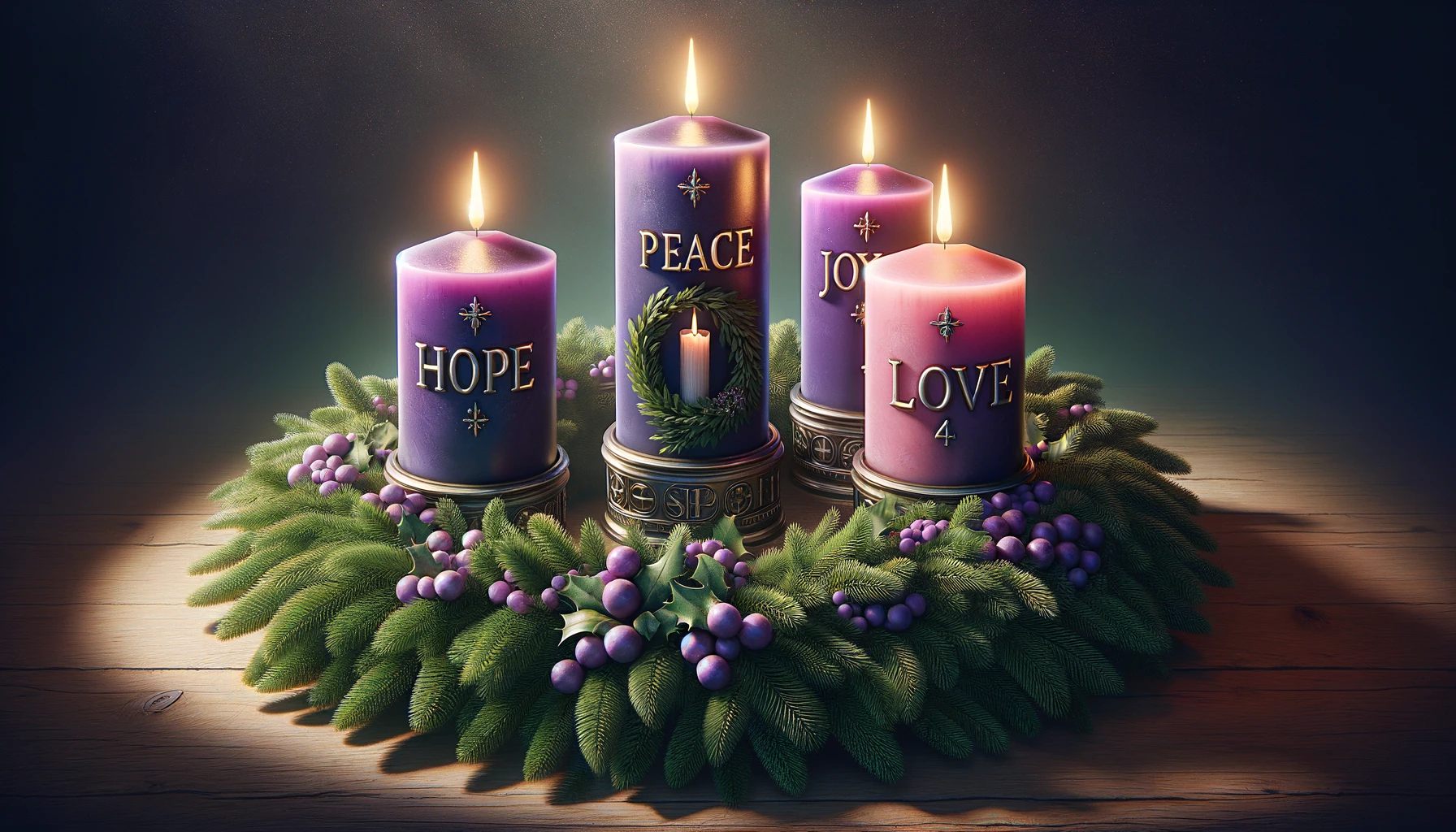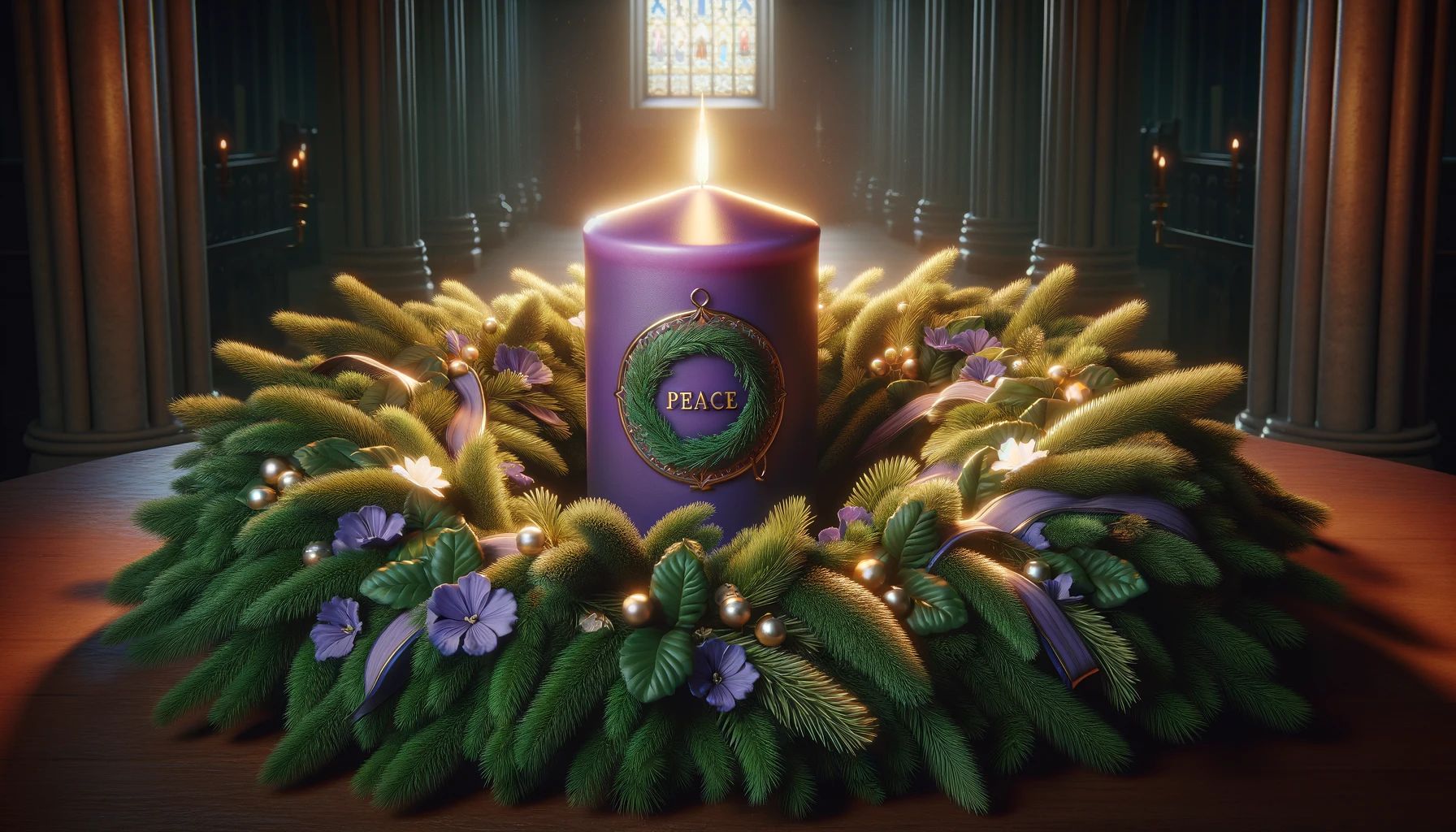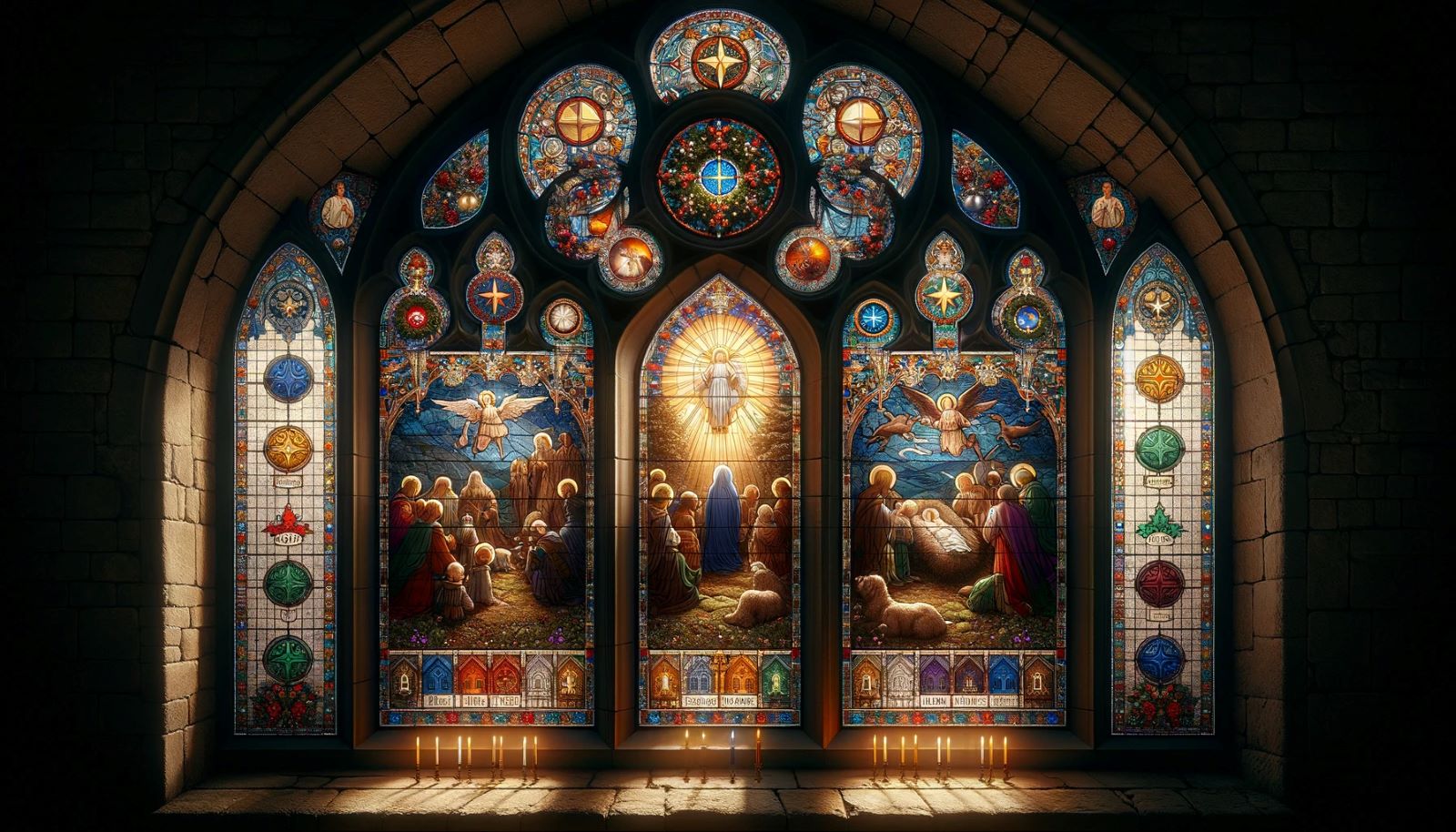Home>Special Themes>What Does Advent Mean In The Catholic Religion
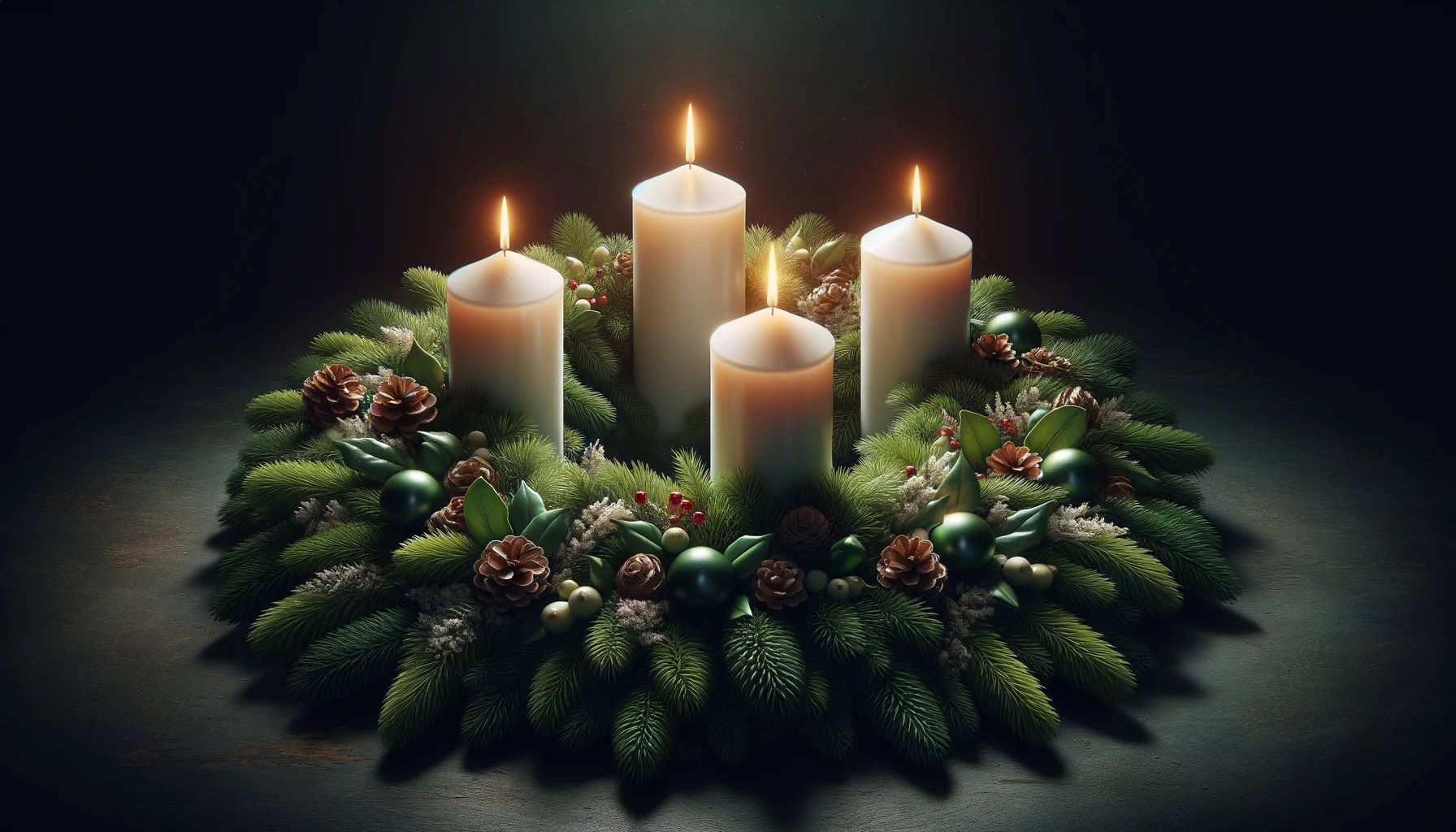

Special Themes
What Does Advent Mean In The Catholic Religion
Published: February 14, 2024
Ericka Andersen, an editor at Christian.net, expertly merges digital strategy with content creation, focusing on faith and societal issues. Her communication skills enhance the platform's engaging narratives, fostering meaningful dialogue on belief's impact on society.
Discover the significance of Advent in the Catholic faith and its special themes. Explore the meaning and traditions of this sacred season.
(Many of the links in this article redirect to a specific reviewed product. Your purchase of these products through affiliate links helps to generate commission for Christian.net, at no extra cost. Learn more)
Table of Contents
Introduction
Advent is a significant time of spiritual preparation and joyful anticipation in the Catholic religion. It marks the beginning of the liturgical year and is a period of profound reflection, hope, and expectation as believers prepare for the celebration of the birth of Jesus Christ. The word "Advent" is derived from the Latin word "adventus," which means "coming" or "arrival." This season is a time for Catholics to focus on the coming of Christ, not only in the historical sense of his birth in Bethlehem but also in anticipation of his second coming at the end of time.
During Advent, Catholics engage in prayer, fasting, and acts of charity as they eagerly await the celebration of the Nativity of Jesus at Christmas. It is a time of spiritual renewal and a reminder of the hope and promise that Christ's birth brings to the world. The Advent season is characterized by a sense of joyful expectation and a call to prepare our hearts to welcome the presence of Christ into our lives.
As we delve deeper into the significance of Advent in the Catholic faith, we will explore the rich history, symbols, and traditions associated with this sacred season. Understanding the profound meaning of Advent allows us to appreciate its importance in the life of the Church and the spiritual journey of believers. Let us embark on a journey to uncover the beauty and depth of Advent, discovering how it shapes the faith and devotion of Catholics around the world.
Read more: What Does Advent Mean In Catholic Church
The Meaning of Advent
Advent holds profound significance in the Catholic religion, symbolizing a period of spiritual preparation and joyful anticipation. It serves as a time of reflection, hope, and expectation as Catholics prepare for the celebration of the birth of Jesus Christ. The essence of Advent lies in its representation of the coming of Christ, both in the historical context of his birth in Bethlehem and in anticipation of his second coming at the end of time.
At its core, Advent embodies a sense of longing and waiting. It encapsulates the collective yearning of believers for the fulfillment of God's promises and the arrival of the Messiah. This season serves as a poignant reminder of the hope and promise that Christ's birth brings to the world, infusing the hearts of the faithful with renewed faith and anticipation.
The four weeks of Advent are marked by the lighting of the Advent wreath, with each candle representing a different aspect of the spiritual preparation for the coming of Christ. The progressive lighting of the candles symbolizes the increasing brightness and hope brought by the imminent arrival of Jesus, the Light of the World.
Moreover, Advent is a time for introspection and spiritual renewal. It calls upon Catholics to engage in prayer, contemplation, and acts of charity, fostering a spirit of repentance and preparation for the celebration of the Nativity of Jesus at Christmas. This period of anticipation encourages believers to realign their hearts and minds, embracing the virtues of faith, hope, and love as they await the arrival of the Savior.
In essence, the meaning of Advent transcends mere anticipation of a historical event; it embodies a profound spiritual journey. It invites Catholics to immerse themselves in the timeless narrative of the birth of Christ, fostering a deep connection to the foundational tenets of their faith. Through the observance of Advent, believers are called to embrace the transformative power of hope and prepare their hearts to welcome the presence of Christ into their lives.
As we delve deeper into the essence of Advent, we gain a deeper appreciation for its significance in the Catholic faith. This sacred season serves as a poignant reminder of the enduring promise of God's love and the anticipation of the fulfillment of His divine plan through the birth of Jesus Christ.
The History of Advent in the Catholic Church
The history of Advent in the Catholic Church traces its origins to the early centuries of Christianity. The precise beginnings of Advent as a liturgical season are not definitively documented, but its evolution can be understood through the historical and cultural context of the Church.
The earliest records of Advent observance date back to the 4th and 5th centuries in Gaul (present-day France) and Spain. During this period, Christians dedicated a period of preparation for the celebration of the Nativity of Christ, focusing on penance, fasting, and prayer. This preparatory period varied in duration, ranging from three to six weeks, and was characterized by a sense of spiritual anticipation and longing for the coming of the Savior.
The Council of Tours in 567 AD is credited with formalizing the observance of a pre-Christmas season, establishing the practice of fasting and penance in the weeks leading up to Christmas. Over time, the observance of Advent spread throughout the Western Church, with the duration of the season standardized to four weeks, symbolizing the four millennia of waiting for the Messiah, as per the belief of early theologians.
The liturgical focus of Advent gradually evolved to encompass both the anticipation of the historical birth of Jesus and the eschatological expectation of his second coming. This dual emphasis on the past and future advents of Christ became integral to the spiritual significance of the season, shaping the theological framework of Advent in the Catholic Church.
The adoption of the Advent wreath, a symbol with pagan origins that was Christianized in the Middle Ages, further enriched the traditions associated with the season. The wreath, adorned with candles representing the weeks of Advent, became a visual and symbolic centerpiece of the season, signifying the increasing light and hope brought by the imminent arrival of Christ, the Light of the World.
In the 20th century, the liturgical reforms of the Second Vatican Council revitalized the observance of Advent, emphasizing its dual themes of preparation for the birth of Christ and anticipation of his second coming. The Council's directives underscored the importance of Advent as a time of spiritual renewal and joyful expectation, reaffirming its significance in the life of the Church.
Today, the history of Advent in the Catholic Church stands as a testament to the enduring tradition of spiritual preparation and hopeful anticipation that has shaped the faith and devotion of believers for centuries. The rich historical tapestry of Advent reflects the timeless journey of the faithful as they prepare their hearts to welcome the presence of Christ into their lives, embodying the enduring promise of God's love and the anticipation of the fulfillment of His divine plan through the birth of Jesus Christ.
The Symbols and Traditions of Advent
The symbols and traditions of Advent in the Catholic Church are deeply rooted in rich symbolism and meaningful rituals, each serving as a poignant reminder of the spiritual significance of the season. These timeless elements not only enhance the visual and sensory experience of Advent but also convey profound theological truths that resonate with believers across generations.
The Advent Wreath
Central to the observance of Advent is the iconic Advent wreath, a circular arrangement of evergreen branches adorned with four candles, often accompanied by a fifth, central candle. The circular shape of the wreath symbolizes the eternity of God and the everlasting nature of His love. The evergreen branches, which retain their green color throughout the year, represent the enduring hope and life brought by Christ into the world.
The lighting of the Advent candles, one for each week of the season, holds deep symbolic meaning. The progressive lighting of the candles signifies the increasing brightness and hope brought by the imminent arrival of Jesus, the Light of the World. Each candle is imbued with specific significance, representing the themes of hope, peace, joy, and love, which are central to the Advent journey.
Read more: What Does Baptist Mean In Religion
The Colors of Advent
The liturgical colors associated with Advent, namely purple and rose, further enrich the visual symbolism of the season. The use of purple, a color traditionally associated with penitence and preparation, reflects the solemn and introspective nature of Advent. It serves as a visual reminder of the call to repentance and spiritual renewal as believers prepare their hearts to welcome the Savior.
The third Sunday of Advent, known as Gaudete Sunday, is marked by the lighting of a rose-colored candle. This deviation from the somber purple hue represents a moment of joyful anticipation amidst the penitential season, signifying the nearness of the celebration of Christ's birth.
The Nativity Scene
The display of the Nativity scene, or creche, is a cherished Advent tradition that vividly depicts the birth of Jesus in Bethlehem. This visual representation of the Incarnation serves as a powerful focal point for contemplation and prayer during the Advent season. The gradual addition of figures to the Nativity scene throughout Advent, culminating in the placement of the figure of the infant Jesus on Christmas Eve, mirrors the anticipation and joyful expectation of the faithful as they await the arrival of the Savior.
Advent Calendars and Wreath Blessings
The use of Advent calendars, often adorned with windows or compartments to be opened each day of the season, is a beloved tradition that engages believers, especially children, in the daily anticipation of Christmas. Additionally, the blessing of the Advent wreath, typically conducted at the beginning of the season, serves as a sacred ritual that sanctifies the wreath and invokes God's presence in the homes and hearts of the faithful.
In essence, the symbols and traditions of Advent in the Catholic Church serve as tangible expressions of the profound spiritual journey that unfolds during this sacred season. They invite believers to immerse themselves in the timeless narrative of the birth of Christ, fostering a deep connection to the foundational tenets of their faith. Through these symbols and rituals, the faithful are called to embrace the transformative power of hope and prepare their hearts to welcome the presence of Christ into their lives.
The Importance of Advent in the Catholic Faith
The significance of Advent in the Catholic faith transcends mere anticipation of the historical event of Jesus' birth. It embodies a profound spiritual journey that holds immense importance in shaping the beliefs, practices, and devotion of believers. Advent serves as a poignant reminder of the enduring promise of God's love and the anticipation of the fulfillment of His divine plan through the birth of Jesus Christ.
At its core, Advent underscores the foundational principles of faith, hope, and anticipation. It calls upon Catholics to engage in introspection, prayer, and acts of charity, fostering a spirit of repentance and preparation for the celebration of the Nativity of Jesus at Christmas. This period of anticipation encourages believers to realign their hearts and minds, embracing the virtues of faith, hope, and love as they eagerly await the arrival of the Savior.
Moreover, Advent provides a structured framework for spiritual renewal and reflection. It offers believers a dedicated period to refocus their attention on the profound significance of the Incarnation and the redemptive message of Christ's birth. Through the observance of Advent, Catholics are invited to deepen their understanding of the theological truths embedded in the Nativity narrative, fostering a profound sense of connection to the core tenets of their faith.
The season of Advent also serves as a catalyst for communal worship and fellowship within the Catholic community. It unites believers in a shared journey of anticipation and preparation, fostering a sense of unity and solidarity as they collectively prepare to celebrate the birth of Jesus. The shared rituals, traditions, and symbols of Advent create a sense of belonging and shared purpose, reinforcing the communal aspect of the Catholic faith.
Furthermore, Advent instills a sense of joyful expectation and hope in the hearts of believers. It serves as a spiritual anchor, grounding Catholics in the enduring promise of God's love and the anticipation of the fulfillment of His divine plan through the birth of Jesus Christ. The season of Advent infuses the faithful with renewed faith, inspiring them to embrace the transformative power of hope as they prepare their hearts to welcome the presence of Christ into their lives.
In essence, the importance of Advent in the Catholic faith lies in its ability to evoke a profound sense of spiritual renewal, anticipation, and communal unity. It serves as a time of preparation, reflection, and joyful expectation, inviting believers to immerse themselves in the timeless narrative of the birth of Christ. Through the observance of Advent, Catholics are called to embrace the transformative power of hope and prepare their hearts to welcome the presence of Christ into their lives.
Read more: What Does Advent Mean In The Bible
How Advent is Celebrated in the Catholic Church
The celebration of Advent in the Catholic Church is a deeply meaningful and spiritually enriching experience that encompasses a range of traditions, rituals, and communal observances. As the faithful embark on this sacred journey of preparation and anticipation, they engage in a tapestry of practices that foster a profound connection to the foundational tenets of their faith.
Central to the observance of Advent is the lighting of the Advent wreath, a symbolic ritual that marks the progression of the season. Each week, a candle is ceremoniously lit, with each candle representing a specific theme – hope, peace, joy, and love. The gradual illumination of the candles symbolizes the increasing brightness and hope brought by the imminent arrival of Jesus, the Light of the World. This ritual serves as a visual and contemplative focal point, inviting believers to reflect on the profound significance of the season.
Prayer and contemplation play a pivotal role in the observance of Advent. Catholics are encouraged to engage in spiritual reflection, seeking a deeper understanding of the theological truths embedded in the Nativity narrative. The Advent season provides a dedicated space for individuals and communities to immerse themselves in prayer, fostering a sense of introspection, gratitude, and anticipation as they prepare to celebrate the birth of Christ.
Acts of charity and outreach are integral to the Advent observance, reflecting the spirit of giving and compassion that defines the season. Believers are called to extend kindness and support to those in need, embodying the virtues of love and generosity exemplified by the message of Christ's birth. This emphasis on charitable deeds serves as a tangible expression of the faith's call to embody the love and compassion of Christ in the world.
The celebration of the Sacrament of Reconciliation, or confession, holds particular significance during Advent. This sacramental rite offers believers the opportunity for repentance, forgiveness, and spiritual renewal, aligning with the season's emphasis on preparation and introspection. The Sacrament of Reconciliation serves as a powerful means of preparing one's heart to welcome the presence of Christ into their lives.
In addition to these practices, the communal worship and fellowship within the Catholic community are amplified during Advent. The shared rituals, traditions, and symbols create a sense of unity and solidarity, fostering a collective journey of anticipation and preparation. The celebration of the Eucharist, or Mass, takes on a heightened significance during this season, serving as a focal point for communal worship and spiritual nourishment.
The observance of Advent in the Catholic Church is a multifaceted tapestry of traditions and rituals that collectively embody the spirit of preparation, anticipation, and joyful expectation. Through prayer, reflection, acts of charity, and communal worship, believers are invited to immerse themselves in the timeless narrative of the birth of Christ, preparing their hearts to welcome the presence of the Savior into their lives.
Conclusion
In conclusion, Advent holds a profound significance in the Catholic faith, serving as a sacred season of spiritual preparation, joyful anticipation, and communal unity. The essence of Advent transcends mere anticipation of a historical event; it embodies a profound spiritual journey that shapes the beliefs, practices, and devotion of believers. Throughout the centuries, the observance of Advent has been characterized by rich symbolism, meaningful rituals, and a deep theological framework that resonates with the faithful across generations.
The history of Advent in the Catholic Church reflects the enduring tradition of spiritual preparation and hopeful anticipation that has shaped the faith and devotion of believers for centuries. From its early origins in the early centuries of Christianity to its revitalization through the liturgical reforms of the Second Vatican Council, Advent has remained a steadfast anchor in the liturgical calendar, guiding believers on a transformative journey of faith and anticipation.
The symbols and traditions of Advent, including the iconic Advent wreath, the liturgical colors, the Nativity scene, and the observance of Gaudete Sunday, serve as tangible expressions of the profound spiritual journey that unfolds during this sacred season. These timeless elements not only enhance the visual and sensory experience of Advent but also convey profound theological truths that resonate with believers across generations.
The observance of Advent in the Catholic Church is a multifaceted tapestry of traditions and rituals that collectively embody the spirit of preparation, anticipation, and joyful expectation. Through prayer, reflection, acts of charity, and communal worship, believers are invited to immerse themselves in the timeless narrative of the birth of Christ, preparing their hearts to welcome the presence of the Savior into their lives.
In essence, the observance of Advent serves as a poignant reminder of the enduring promise of God's love and the anticipation of the fulfillment of His divine plan through the birth of Jesus Christ. It fosters a deep connection to the foundational tenets of the Catholic faith, inviting believers to embrace the transformative power of hope and prepare their hearts to welcome the presence of Christ into their lives. As the faithful journey through the season of Advent, they are called to embody the virtues of faith, hope, and love, fostering a spirit of repentance, renewal, and joyful anticipation as they prepare to celebrate the birth of Jesus at Christmas.
